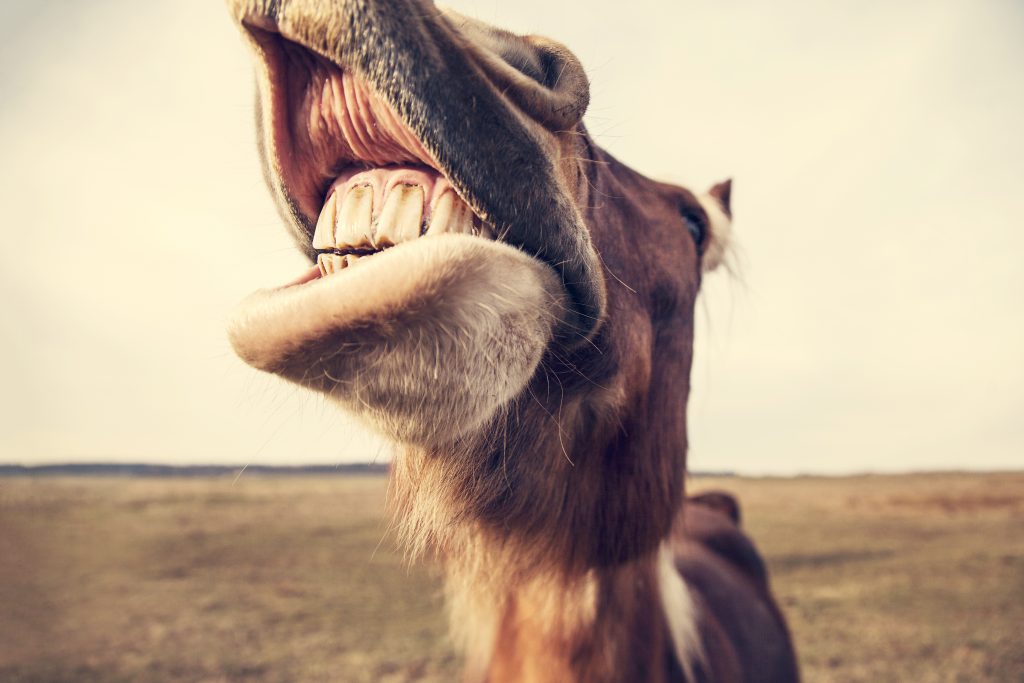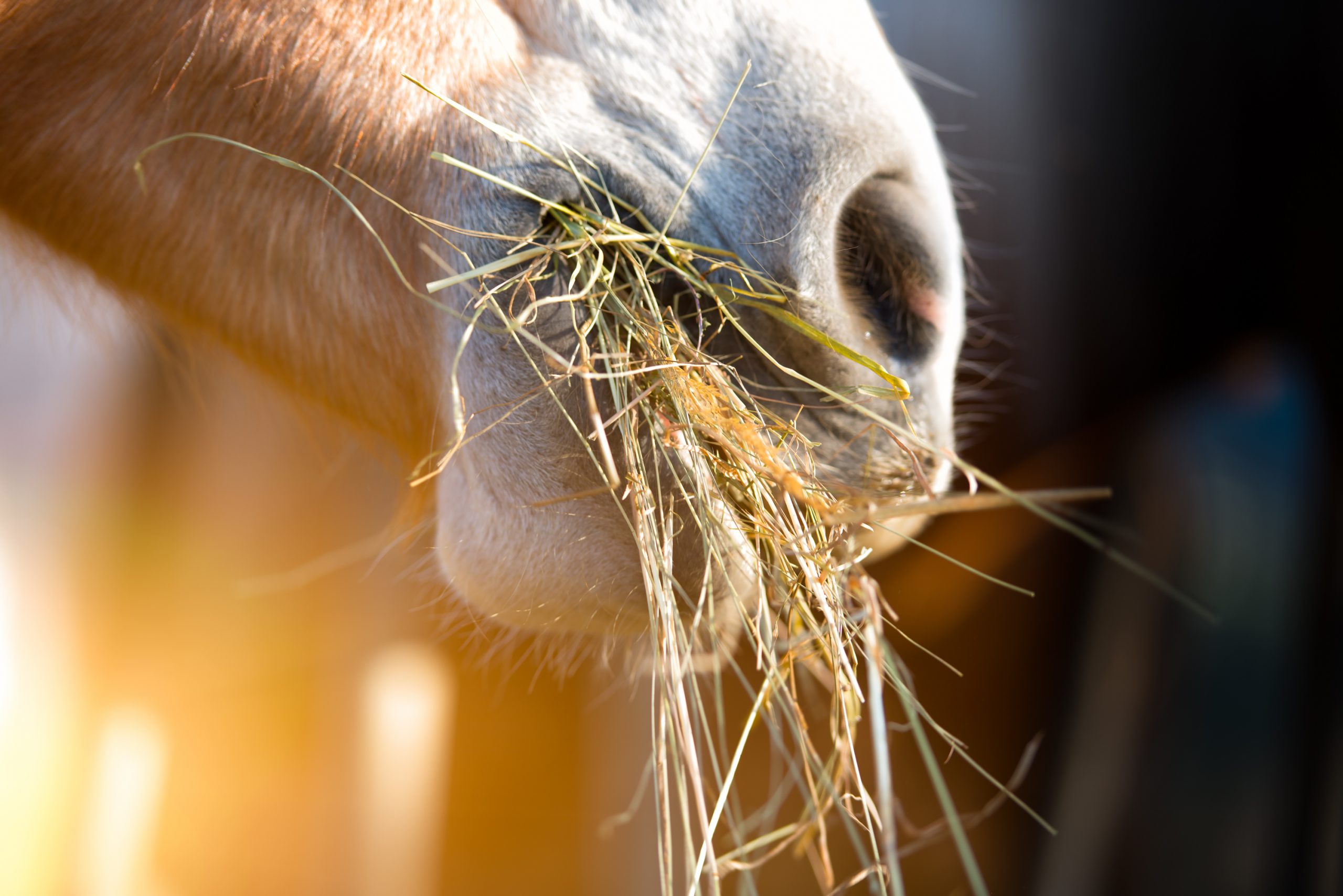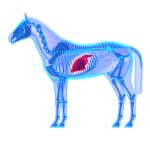Dr David Wood BVSc, MRCVS
Just as humans are living longer then before, advances in nutrition and veterinary care have led to some increase in the lifespan of horses. Not only longevity but the capacity for active work has been extended and it is not uncommon for top level competitions to include horses in their late teens with 20+ year old’s still leading active working lives. However, to maintain these oldies in good health and condition we need to recognize that they need some special attention, particularly in the following areas:
- Teeth
- Nutrition & Gut Function
- Bones & Joints
- Muscle mass and condition
- Temperature control
The teeth of horses grow continually and wear down throughout life. By the age of fifteen the incisors tend to grow outwards at a shallower angle and by the age of twenty plus this may affect some horse’s ability to graze pasture effectively. Normal wear also tends to produce sharp edges on molar teeth which require filing down or they will lacerate the tongue and cheeks. Dental inspection twice yearly is especially important now because if the horse is unable to chew properly due to pain or tooth trouble then digestion will be compromised.

In aged horses sometimes the teeth become worn down to stubs, barely protruding above the gum line and ineffective for chewing forages or grazing pasture. These horses will benefit from a tub of chaff available all day, and some pellets or better still, extruded feed soaked and formed into a mash. Good dental care really is one of the most useful things you can do to support the welfare of these senior horses.
We regard some fall off in condition as normal in aged horses. In part this may result from impaired digestive efficiency – the old horse is unable to extract and absorb as much nutrient from its feed as he could in his younger days. We now know that efficient digestion of fiber is related to the diversity in the microflora of the hind gut – the more different families of bacteria in the gut microbiome, the more efficient digestion seems to be. In older horses this population of gut bugs, called the core microbiome, does seem to be less diverse, which may account for the reduced feed conversion efficiency. Understanding this opens to door to the possibility of manipulating the diet to counteract the problem and potentially prevent or mitigate that drop in condition.
Maintenance of a healthy efficient hind gut is largely dependent on two things:
- Supply of enough fiber to support the fiber digesting microflora which naturally live there
- Avoidance of starch entry into the hind gut which disrupts the normal microbiome, reduces its diversity and can lead to gut wall damage limiting nutrient absorption.
This means that a minimum 1.0% -1.5% of the horse’s bodyweight should comprise forage feeds – basically hay and grass or pasture, but high fiber by products like beet pulp, copra, and soy hulls work well too. For a 450kg horse this equates to 4.5 – 7 kg of forage feed per day. Where pasture needs to be supplemented by additional forage, Lucerne hay is regarded favorably due to the high protein low sugar content, but a mixed ration including grass and cereal hay and chaff is preferable. The different types contain a varied profile of other nutrients like trace elements, minerals and vitamins. Steak and chips may be good, but you wouldn’t want to try and live on it every day.

The bottom line is that plenty of fiber is beneficial to the hind gut and will help promote digestive health, even in older horses, simply because fiber is what horses evolved to eat.
The other factor we can use to help digestive efficiency is to reduce the amount of starch escaping digestion in the small intestine and entering the hind gut. In this respect modern feed processing has come to the rescue. Techniques like micronization and steam extrusion ensure that virtually all the starch is available to enzymes in the small bowel and is less likely to spill over into the hind gut. Whole grains, or lightly processed feeds like crimped, rolled or crushed grain is far more likely to evade small intestine starch digestion. The solution is to take advantage of the modern processing and utilize micronized or extruded feeds for older horses as much as possible.
Protein digestion, absorption and effective use by the body may also decline with age. In part this may be due to the capacity of the aging liver to handle protein, breaking it down and rebuilding new proteins from component amino acids. The demand for protein does seem to rise in older horses, but overloading protein in the diet may be counterproductive.
Protein metabolism generates some potentially toxic compounds which need to be excreted into the bile or via the kidneys. A better approach is to improve protein quality along with moderately increased quantity. Good quality protein contains high levels of the amino acid Lysine and is found in seeds like soy, lupin and sunflower. Look for protein content of 15% or more with Lysine levels of 15g/kg (1.5%) or higher in manufactured supplementary feeds for these older horses.
Horsepower Spellets is a high- quality protein supplement pellet designed initially for use on stud farms, but it works very well to boost protein, lysine and mineral intake for the seniors as well.
Oil is widely used as an energy supplement and has some distinct advantages over starch, especially for horses prone to laminitis or those with insulin resistance or Cushing’s disease. We do know however that oil tends to reduce diversity in the hind gut microbiome which is something we would prefer to avoid. Despite that oil probably should have a place in the diet of most geriatric horses and particularly the oils rich in Omega 3 fatty acids have a useful anti-inflammatory role to play.
Minerals and Trace Elements remain critical for optimal overall health as well as for maintaining bone density and skeletal health.
As many soils in Australia and the crops growing on them are trace element deficient, the horse is reliant on getting essential minerals from supplementary sources, not just pasture. Many older horses receive pasture only for at least part of the year, but survey work has shown that these horses will be deficient in several minerals and trace elements during different seasons, especially calcium, zinc, copper and manganese. Certain geographical areas are known to be deficient in selenium and iodine which may compound the problem.
Adequate calcium supply can be drawn from supplementary feeds and high calcium Lucerne hay as well as some mineral blocks. For the latter choose a soft cold pressed block designed specifically for horses – the hard brick types are often 95% salt and do not suit the soft tongues of horses who can only consume a few grams per day from them. Most manufactured feeds are fortified with trace elements, but the feeding rate guide must be followed to ensure adequate intake. Mineral and trace element supplements, blocks or ration balancer pellets may provide a useful option for grazing horses. The cold pressed Horsepower Minerals Plus Block was designed with exactly this situation in mind and is a simple solution to cover all these mineral and trace element bases.
Vitamins. Do older horses need more vitamins? We don’t really know for sure, but a couple of factors may influence the answer. Firstly, many vitamins of the B group and vitamin C are made by microbes in the horse’s gut and don’t need to be supplied solely by the diet. Since gut function and microbial diversity decline with age it may be that vitamin manufacture does too and that would push up demand for vitamin supply by the diet
 Liver function in older horses is also often compromised and the liver plays a vital role in vitamin metabolism, so again, vitamin availability may be affected. The bottom line is that providing extra vitamins in the diet either in fortified feeds or as a supplement like Horsepower Vitamin Supplement will prevent any deficiencies which might otherwise affect health and vitality.
Liver function in older horses is also often compromised and the liver plays a vital role in vitamin metabolism, so again, vitamin availability may be affected. The bottom line is that providing extra vitamins in the diet either in fortified feeds or as a supplement like Horsepower Vitamin Supplement will prevent any deficiencies which might otherwise affect health and vitality.
Aches & Pains. With age comes wear and tear and degenerative joint disease plagues a lot of older horses and older riders too. So called Joint Supplements are the most popular supplements of all the many types used by horse owners. Most have limited, if any, appreciable value and at least half of all horses over seventeen years of age will require anti- inflammatory NSAID medications at some point to keep them comfortable and pain free.
One freely available supplement which does have demonstrated anti-inflammatory properties is the Omega 3 fatty acid found in fish oil and flaxseed oil such as Horsepower Omega E Plus Oil. Omega 3’s are not going to cure a severely arthritic joint but may at least help keep some minor aches and pains at bay. Keeping older horses comfortable is an important part of maintaining their overall welfare and quality of life as well as their usefulness pre- retirement.
Maintain the muscles. Poor teeth, reduced digestion and absorption of nutrients, liver disease and poor kidney function may all affect the 20 year plus horse to variable extents. Aging kidneys tend to be associated with protein loss into the urine, draining a vital resource from the muscle mass. This can be countered by provision of some extra good quality protein as outlined above. Skinny horses may also benefit from the mild natural anabolic effect of Gamma Oryzanol found in rice bran and the high protein supplement Top Up from Horsepower. Designed principally for racehorses and yearling sales preparation, Top Up combines minerals, trace elements and vitamins with a potent protein hit to help reverse declining muscle mass and condition in oldies too.
Heat and Cold both affect the older horse more than their young counterparts as the ability to control and maintain body temperature slowly deteriorates. Diet can be manipulated to help provide more heat in winter by adding roughage which generates more heat during digestion. An extra kilo of concentrates may be needed in cold weather too, just to provide the additional energy needed to stay warm. So, when it’s time to put the rugs on, add some more hay and hard feed to the ration as well. Aim for a condition score of around 7/10 during the chilly weather – a little fat cover is a great insulator on cold nights.
Sometimes old horses lose condition despite good dental care, extra feed and a high-quality diet. When that happens it’s time to call in the vet and find out what else may be going on. From insulin resistance to Cushing’s disease, a fatty liver or failing kidneys there’s a range of possible problems that only a veterinary examination can evaluate. The sooner these are identified the better chance of a positive outcome.
Understanding the changes to the aging horse’s physiology described here, and how these can be managed through appropriate nutrition and care, will give your senior horses the best chance of enjoying a long and comfortable life.

